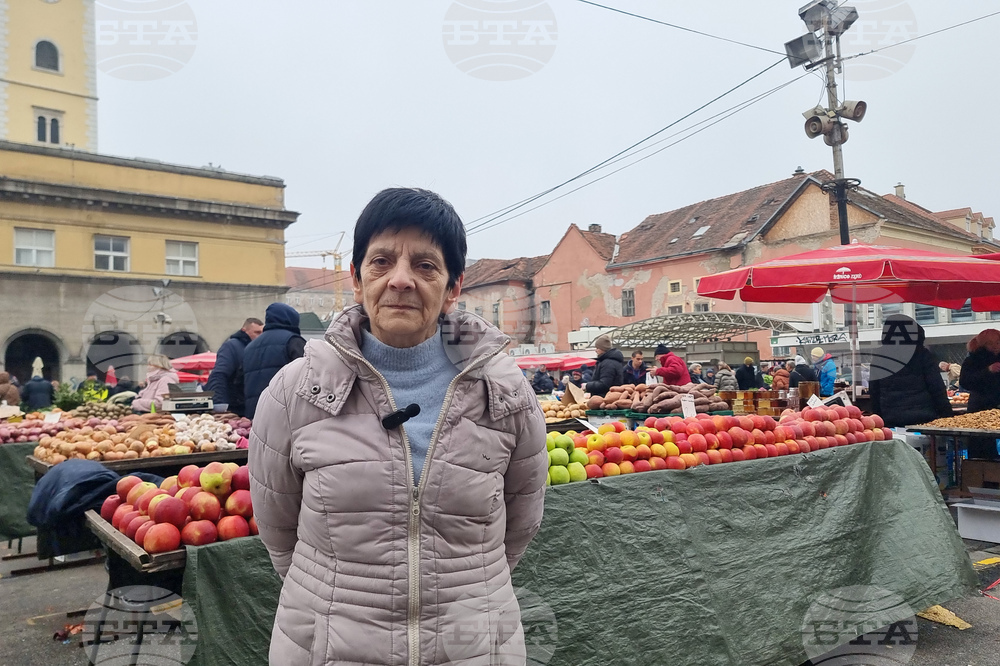site.btaBulgarian Journalist in Zagreb: Bulgarians Were Major Contributors to Vegetable Production in Croatia, Introduced Croats to Many Vegetables


Bulgarian gardeners have carried the glory of Bulgaria for more than a century and a half to the north and south, east and west, they have been true "ambassadors" of the modest and hardworking Bulgarian people - these are some of the opening words in the book Bulgarian Gardeners in Croatia by journalist Diana Glasnova, who is also the editor-in-chief of the bilingual magazine "Rodna Riječ" (Native Speech), an organ of Nacionalna zajednica Bugara u Republici Hrvatskoj (The Bulgarian National Community in the Republic of Croatia). The book explores the history of Bulgarian gardeners who arrived in Croatia in the second half of the 19th century and left their mark on vegetable production in the country.
"It can be said that Bulgarians have made a very big contribution, not to say the main contribution, to the development of vegetable production in Croatia. I am talking about production in quantities that are for sale," Glasnova said in an interview with Bulgarian News Agency's (BTA) special correspondent Simona-Alex Mihaleva. "Until the Bulgarians came to Zagreb, around 1870-80, mass cultivation of vegetables for sale was not common practice. Everybody had a yard where they grew something."
She said that many of the vegetables that can be found in Croatian markets every day today were not known to Croats at all before the Bulgarians arrived.
"Aubergines were brought by the Bulgarians. Sometimes people asked what it was and our gardeners jokingly said it was an ostrich egg. They asked if it was boiled or baked," Glasnova said.
The Bulgarians also brought the red peppers to Croatia, which are still known to Croatians as Bulgarian red peppers. However, they are innovators in the eyes of the locals not only because of their unknown production, but also because of the way they grew it. Glasnova said that among the Bulgarian "patents" are the saqiyah [from Persian: water wheel] for watering vegetables, the shaping of planting areas divided into beds, growing early seedlings in beds, etc.
The Bulgarians followed strict deadlines for planting different types of vegetables, as well as certain superstitions, such as planting only on Mondays, Wednesdays and Fridays, and preferably on a full moon, in order to have a successful harvest.
"It can be said that even to this day the people of Zagreb know what the Bulgarians contributed to the city's sustenance," pointed out Glasnova.
In her book, she mentions that Croats "called their smallest coin "bugarica" and their small money "bugari" [from Bulgarians] as even with it they could buy fresh vegetables from "their Bulgarian", the journalist writes in her book.
"These facts are little known because after the end of World War II, for various political reasons, the attitude towards Bulgaria in Yugoslavia was such that many Bulgarians returned to their country and very few gardeners remained," she told BTA. "For example, in 1942 there were about 2,000 Bulgarian gardeners in Zagreb, and at the end of 1945 there were only 250."
"One of the other main reasons (for the Bulgarians leaving) was the land - in order to grow vegetables, they had to rent land, which was mainly owned by the Catholic Church," Glasnova explains. "When confiscations of the Church's properties followed, confiscations of large estates near the city, the Bulgarians were left without land and naturally had to close their gardens. They were not allowed to buy land unless they were married to a Yugoslav citizen in whose name they could buy the land."
Obtaining a work visa also emerged as a major problem.
The number of Bulgarian stalls in Zagreb's central Dolac market once exceeded the number of Croatian stalls. Today, however, there is not a single Bulgarian stall left. The last Bulgarian gardener at the Dolac market retired a few years ago, and his place is now taken by Croatians who probably have no knowledge of how much the Bulgarians have done for their business in the past.
/RY/
news.modal.header
news.modal.text